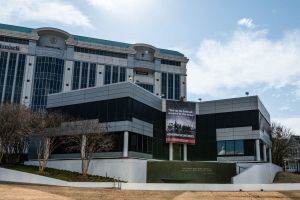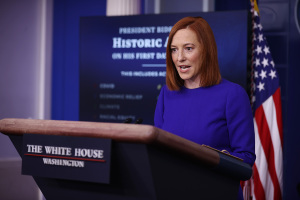2011 Natural Disasters Cost U.S. Taxpayers $52 Billion, Report Says
A report released Wednesday by the National Oceanic and Atmospheric Administration (NOAA) says that 2011's natural disasters each caused at least $1 billion in damage. Ranging from blizzards to brushfires, the collection of natural phenomena is costing American taxpayers in total $52 billion.
"In many ways, 2011 rewrote the record books," said Chris Vaccaro, a NOAA spokesperson, in an e-mail. "It's taken a huge financial toll with high economic losses and a heavy loss of life with more than 1,000 weather-related fatalities and more than 8,000 people injured."
Vaccaro said his organization has overseen data collection on disasters as varied as blizzards, heat waves and floods since 1980. He said that a major factor in increasing damage and fatalities was La Nina, a cyclical climate pattern that reroutes typical storm patterns, sending them in unfamiliar directions. He said they hit high-population centers they'd normally leave alone.
But $52 billion is relatively minor compared to 2005’s Hurricane Katrina, which alone cost $145 billion in losses.
Jack Hayes, the director of NOAA's National Weather Service, pointed out this year’s unique weather problems in a video on the organization’s website.
"Sure, we've had years with extreme flooding, extreme hurricanes, extreme winter snowstorms and even extreme tornado outbreaks," said Hayes. "But I can't remember a year like this in which we experienced near-record breaking extremes of nearly every conceivable type of weather."
NOAA's records indicate that 2011 got off to a tough start with a Groundhog's Day blizzard in the Northeast, costing $1.8 billion and 38 deaths. The middle of the country was next battered by a series of six tornado outbreaks with multiple touchdowns, followed by a drought that swept the Southwest from fall to spring.
Flooding next caused damage and fatalities in the Midwest and along the Mississippi, while Hurricane Irene wreaked havoc to the tune of $7.3 billion and 45 deaths. Last but not least, wildfires plagued the Southeast from spring to late fall.
"Extreme weather and associated societal impacts have increased in recent years," Hayes said. "To combat increased vulnerability, communities across the country must become more resilient to extreme weather."
Hayes said that research, education and outreach could help communities improve their forecasts and warnings.
Michael Oppenheimer, a professor of geosciences and international affairs at Princeton University, said that understanding our communities and their relationship with climate was another vital component.
"There has been a trend globally towards increased monetized damage from climate-related disasters," he said. "I'm not surprised the U.S. is suffering through the same trend. It's caused by putting more people and infrastructures in harm's way. Large numbers of people, for example, now live in coastal areas."
Robert Henson, a writer and editor for the National Center for Atmospheric Research in Boulder, Colo., said that the various disasters in NOAA's reports were ripples from the larger weather pattern of La Nina. He said it assaulted areas by crippling infrastructure and taking the lives of unsuspecting citizens unprepared for extreme weather.
"We are more vulnerable sometimes than we realize," Henson said. "The material cost is certainly startling, but the human cost is what struck me this year. It's very sobering."
Oppenheimer said that science could help explain and predict such dangerous natural disasters in the future. Asked about the role of faith in understanding such phenomena, he said the two could coexist and better prepare people for trials and tribulations down the road.
"Everyone is entitled to their own philosophic explanation of the universe," he said. "There are a lot of very good scientists who are religious and plenty of religious people who accept science. I don't see religion and science as being inevitably in conflict. The world has prospered thus far due to a combination of both."




























